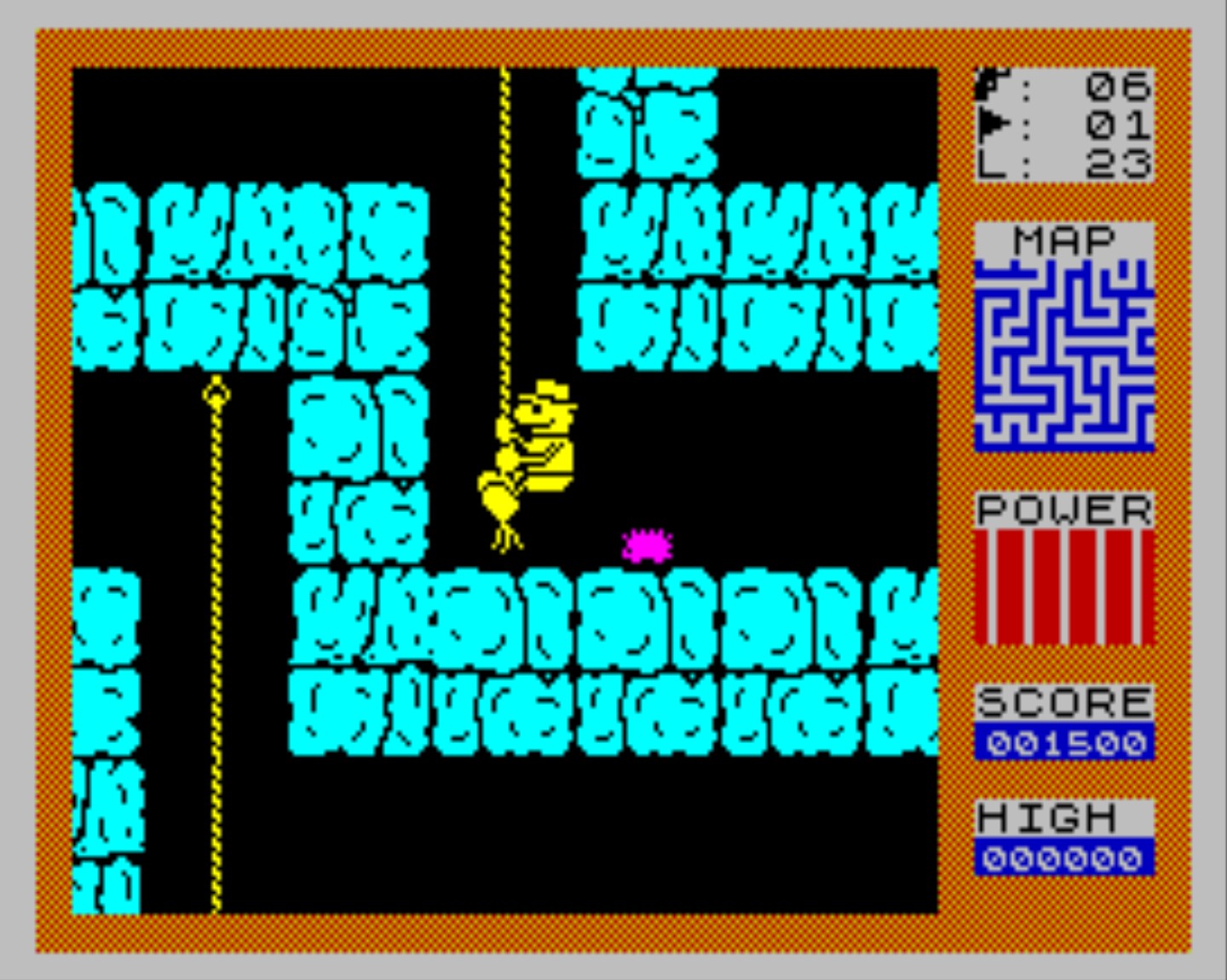In the early 1980s, the video game industry experienced a significant transformation, with home computers becoming more accessible and powerful. One of the most iconic machines of this era was the ZX Spectrum, a British-made computer that became the cornerstone of many classic games. Among these was “Fred,” a game that, while perhaps not as widely known as some of its contemporaries, left a lasting impact on those who played it. This article explores the history, gameplay, and legacy of Fred, highlighting why it remains a memorable part of the ZX Spectrum’s rich gaming heritage.
The Birth of Fred
“Fred” was developed by the Spanish company Indescomp and released in 1984. The game was programmed by Paco Menéndez and published by Quicksilva1, a prominent British software house. This period was a golden age for the ZX Spectrum, with developers pushing the boundaries of what the hardware could achieve. Fred was one of the games that exemplified the creativity and innovation of this era.
Gameplay and Mechanics
Fred is an action-adventure game that puts players in the shoes of an intrepid archaeologist named Fred. The objective is to navigate a series of labyrinthine tombs, avoiding traps and enemies while collecting treasures. The game is set in a series of interconnected rooms, each filled with its own challenges and hazards.

One of the standout features of Fred is its complex level design. The tombs are intricate and require careful navigation, with players needing to memorize the layout to avoid dead ends and traps. The game’s difficulty is compounded by the presence of various enemies, including mummies, bats, and spiders, which must be avoided or outmaneuvered. Fred’s limited ammunition means players must use their shots wisely, adding a layer of strategy to the action.
The game’s control scheme, while simple, is effective. Players use the keyboard to move Fred left, right, up, and down, with a separate key for firing his weapon. This simplicity belies the game’s challenging nature, as precise movements are often required to navigate the tight spaces and avoid enemies.
Visuals and Sound
For its time, Fred featured impressive graphics that took full advantage of the ZX Spectrum’s capabilities. The character sprites are well-defined, and the environments are richly detailed, creating a convincing and immersive world. The use of color, while limited by the Spectrum’s hardware, is effective in distinguishing different elements of the game, such as enemies, traps, and treasures.
The sound design, though basic, adds to the game’s atmosphere. The ZX Spectrum was not known for its audio capabilities, but Fred makes good use of the available resources. The sound effects, including the iconic beep when Fred fires his weapon, are simple yet memorable. The lack of background music is typical of games from this period, allowing players to focus on the action without distraction.
Reception and Legacy
Upon its release, Fred received positive reviews from both critics and players. It was praised for its challenging gameplay, intricate level design, and impressive graphics. The game quickly became a favorite among ZX Spectrum owners and remains a beloved classic to this day.
Fred’s success can be attributed to several factors. First, its challenging yet rewarding gameplay kept players engaged and motivated to improve their skills. The game’s difficulty curve was well-balanced, providing a tough but fair challenge that encouraged repeated playthroughs. Second, the detailed and atmospheric graphics helped to create a sense of immersion that was rare in games of this era. Finally, the character of Fred himself, with his Indiana Jones-inspired design, resonated with players and added a sense of adventure to the game.
Over the years, Fred has been remembered fondly by the retro gaming community. It has been included in various compilations of ZX Spectrum games and has been referenced in discussions about the best games of the era. The game’s influence can also be seen in later titles that adopted similar gameplay mechanics and level designs.

Fred’s Place in ZX Spectrum History
The ZX Spectrum was home to many iconic games, and Fred holds a special place among them. It exemplifies the creativity and innovation that characterized the early years of home computer gaming. Despite the technical limitations of the ZX Spectrum, developers like Paco Menéndez were able to create rich, engaging experiences that pushed the boundaries of what was possible.
Fred is also a testament to the international nature of the video game industry, even in its early days. Developed by a Spanish company and published by a British one, the game highlights the cross-cultural collaboration that has always been a part of gaming. This international approach helped to create a diverse and vibrant gaming landscape, with Fred being just one example of the many unique and memorable titles that emerged during this period.
Fred
Fred is more than just a game; it is a piece of gaming history that showcases the creativity and ingenuity of early video game developers. Its challenging gameplay, detailed graphics, and atmospheric design have left a lasting impression on those who played it, and it remains a beloved classic among retro gaming enthusiasts. As we look back on the legacy of the ZX Spectrum, Fred stands out as a shining example of what made this era of gaming so special.
In a world where video games have become increasingly complex and sophisticated, Fred serves as a reminder of the charm and simplicity of early gaming experiences. It is a testament to the enduring appeal of well-crafted gameplay and the lasting impact that a single game can have. Whether you are a longtime fan of the ZX Spectrum or a newcomer to the world of retro gaming, Fred is a game that deserves to be played and remembered.













